Skip over navigation
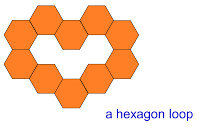
A hexagon loop is a closed chain of hexagons that meet along a whole edge and in which each hexagon must touch exactly two others.
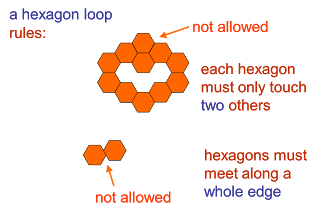
They do not need to be symmetrical or short:
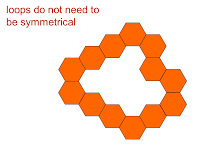
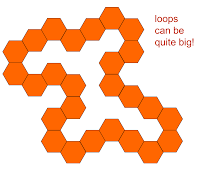
Can you find any rules connecting the numbers of tiles, the inside perimeter and the outside perimeter?
You might want to start by exploring square loops or growing sequences like these:
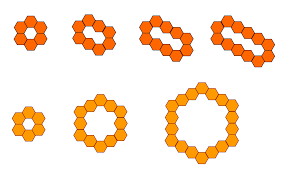
If you haven't got a supply of regular hexagons you could work on these regular hexagon sheets
With thanks to Don Steward, whose ideas formed the basis of this problem.

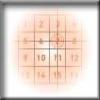

Or search by topic
Number and algebra
Geometry and measure
Probability and statistics
Working mathematically
Advanced mathematics
For younger learners
Regular Hexagon Loops
Age 11 to 14
Challenge Level 






A hexagon loop is a closed chain of hexagons that meet along a whole edge and in which each hexagon must touch exactly two others.

They do not need to be symmetrical or short:


Can you find any rules connecting the numbers of tiles, the inside perimeter and the outside perimeter?
You might want to start by exploring square loops or growing sequences like these:

If you haven't got a supply of regular hexagons you could work on these regular hexagon sheets
With thanks to Don Steward, whose ideas formed the basis of this problem.
You may also like
Summing Consecutive Numbers
15 = 7 + 8 and 10 = 1 + 2 + 3 + 4. Can you say which numbers can be expressed as the sum of two or more consecutive integers?
Always the Same
Arrange the numbers 1 to 16 into a 4 by 4 array. Choose a number. Cross out the numbers on the same row and column. Repeat this process. Add up you four numbers. Why do they always add up to 34?
Fibs
The well known Fibonacci sequence is 1 ,1, 2, 3, 5, 8, 13, 21.... How many Fibonacci sequences can you find containing the number 196 as one of the terms?

